Due to its very nature, lucid dreaming (LD) has been reported to be an overwhelmingly pleasant experience, by most of those who have had such dreams. I can personally attest to that as well.
The possibilities for recreation and entertainment are quite literally limitless in the world of lucid dreams. Think about it all as a sort of VR experience created by your own imagination, on the go. In addition to this entertainment-rooted dimension, lucid dreaming can be used for a number of other – much more serious purposes.
It could possibly be employed in the treatment of sleep disorders and various other psychological conditions. Inventors and creators could perhaps use it to expand their mental horizons. The possibilities in this regard are quite limitless as well.
With that in mind, it is not exactly surprising that LD has always stirred up quite a bit of scientific interest. That said, science has thus far been unable to secure a grip on LD, for lack of reliable induction methods and solutions.
There are scores of supplements one can take to create favorable conditions for LD. But there also need to be reliable physical triggers, which can be employed time and again to repeat experiments and to recreate LDs for study.
This is where Lucid Dream Masks come into the picture.
How Do Lucid Dream Masks Work?
The creators of some of these devices have opted for the high tech approach, while others settled for simpler solutions. As such, some devices employ EEG (electroencephalographic) technology to detect REM sleep stages. Others do not bother with detection at all.
All LD-inducing equipment delivers some kind of stimulus that is meant to embed itself into the user’s dream content. From there, it can trigger lucidity by acting as a sort of dream sign. Such stimuli can be visual (light), auditory (sound), and tactile (vibrations). Some devices even use transcranial alternating current for stimulation.
In the past, scientists researching lucid dreaming even resorted to olfactory (smell) stimulation. None of the devices reviewed below have resorted to that stimulatory path. Another thing worth pointing out in regards to these older studies is that they found physical stimulation surprisingly effective for triggering lucid dreams.
With that in mind, any of these devices may turn out to be the missing link to reliable LD triggering.
A Message from Don Juan
In Journey to Ixtalan, an advice Don Juan gives his disciple, author Carlos Castaneda, suggests that even just a plain headband or Sleep Phones may be enough. Castaneda shares with Don Juan how it had become difficult for him to use his lucid dream induction technique, to which Don Juan replies:
“You must wear a headband to sleep,” he said. “Getting a headband is a tricky maneuver. I cannot give you one, because you yourself have to make it from scratch. But you cannot make one until you have had a vision of it in dreaming. See what I mean? The headband has to be made according to the specific vision. And it must have a strip across it that fits tightly on top of the head. Or it may very well be like a tight cap. Dreaming is easier when one wears a power object on top of the head. You could wear your hat or put on a cowl, like a friar, and go to sleep, but those items would only cause intense dreams, not dreaming.”
The first attempts at creating LD-triggering devices date back to the 1980s. The results of these attempts were NovaDreamer and DreamLight.
Somni Mask – A Promising Solution for On-demand Lucid Dream Induction
The Somni Mask adopts a proven approach to triggering in-dream lucidity. Like many other LD masks, it delivers visual and audio cues to the dreamer’s mind. This way, it replaces the reality checks dreamers may fail to remember to perform.
What makes the Somni Sleep Mask different from other LD induction solutions is its ability to detect REM sleep through a special sensor. This way, the device can deliver its audio and visual reality checks in a targeted way, when they make the most sense.
The user feedback available on the Somni Sleep mask is thus far promising. Many oneironauts have used it successfully to achieve in-dream lucidity. Some have reported their experiences with the Somni Sleep Mask in great detail.
One user managed to achieve lucidity both through audio and visual triggers. The early versions of the sleep mask were quite buggy, sometimes requiring manual reprogramming. Later versions have ironed out many of these bugs.
With proper settings, the Somni Sleep Mask seems to work well, although, at this point, we still cannot state that it triggers lucid dreams reliably.
After the user turns on the device, it does not begin tracking eye movements until 5-10 hours later. Thus, it gives the sleeper a chance to reach the REM sleep stage naturally.
In addition to the sensor tracking eye movements, the device uses an accelerometer to identify head movements. The purpose of this feature is to eliminate false-positive REM readings.
Following a successful REM reading, the device delivers a round of visual and audio stimulation. After that, it goes into pause mode to avoid disturbing the user’s lucid dream.
The concept behind the Somni Sleep Mask is solid, and the lucid dreaming community likes the device. With a bit of fine-tuning, it may grow into a reliable lucid-dream induction solution.
As its name makes it clear, DreamLight used visual stimulation during the early experiments aimed at LD triggering. LaBerge, the “father” of whatever science we currently have on lucid dreaming, was one of the inventors of the device.
During testing, DreamLight saw use with 14 volunteers, 11 of whom ended up reporting a total of 32 LD episodes. Although the sample size used in the study was obviously small, the results were more than encouraging. Scientists added a placebo element to the mix as well, and the method proved effective against it.
The device currently available under the same name is a sleeping mask which is not aimed expressly at lucid dream induction. Instead, its Pro version is designed to help with meditation and to improve overall sleep quality.
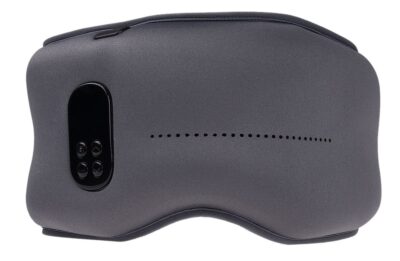
It monitors sleep and heart rate and it is apparently used to counter the detrimental effects of jet lag. Again: this device does not seem to be linked to the original 1980s DreamLight in any way. That one was not commercialized.
The first device available commercially to the public was the NovaDreamer, also developed by LaBerge and co.
NovaDreamer was a sleeping mask as well, which detected REM sleep automatically, and . The original NovaDreamer was available until 2004.
The Lucidity Institute announced work on a new version of NovaDreamer in 2009. Since then however, nothing new has transpired in the matter. As such, like DreamLight, NovaDreamer cannot currently be purchased anywhere. Second-hand devices may theoretically still become available though.
Aurora – Crowd-funded, Open Source (5/5)
The Aurora headband is marketed primarily as a sleep improvement device. That said, it is obviously aimed at the induction of lucid dreams. The marketing approach may be an attempt to appeal to a larger potential user base. If you are into lucid dreaming, Aurora is definitely a good option.
The device is equipped with electrodes to monitor EEG activity. It can also detect movements with accelerometers. It delivers stimulation via light, at the opportune moments. Aurora also comes with a built-in alarm, which wakes up the sleeper at the best possible time/sleep stage.

A sleep stage tracking algorithm is at the heart of the device, which allegedly works with great accuracy, in 90% of those who have thus far tested it. Such a claim is a bold one indeed, and unfortunately, the official Aurora website does not provide much scientific proof to back it up.
Aurora’s app suite brings more features to the table. It records sleep cycles and it allows users to review and to manage their sleep. Most importantly however, it allows for the customization of dream arousals. Through the device and the app suite, users can contribute to the global body of research concerning lucid dreaming.
The headband is capable of storing some 100 nights’ worth of sleep data. It comes with a wireless connection and can be recharged through USB.
Aurora is one of the LD-inducing devices which was born out of crowd-funding. Its creators sought to raise some $90,000 for its development. Interested parties contributed northward of $240,000 however, proving that interest in such devices was higher than anticipated.
Those looking to pick up an Aurora headband need to pre-order it. It will set buyers back by some $175. That does not make it cheap, but considering its capabilities, it is reasonably priced. For its overall utility and impressive capabilities, I will rate the Aurora a 5 out of 5.
Aurora is open source, so those skilled and so inclined can actually tinker with the platform itself.
Remee – Simplistic, Cheap but Possibly too Rough-hewn (3/5)
Though the capabilities/price ratio of the Aurora headband is quite superb, some may find it too expensive. The Remee sleep mask is the right choice for such people. Costing only $65, Remee is certainly an attractive piece of equipment. Also, lucid dream induction is one of the main marketing angles of the device.
What exactly do oneironauts get for that kind of money? Not only is Remee cheap, it is also lightweight and quite comfortable to wear. It does not use real-time, online sleep stage detection however – as one may expect it.
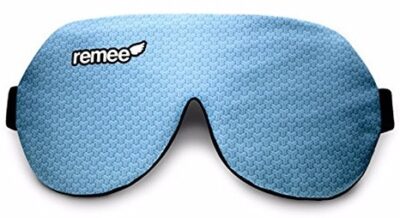
Instead, it uses a series of smart timers and lights for lucidity stimulation. This approach is quite a bit rougher than delivering stimulation during the REM stages. It is more akin to throwing a bunch of peas against the wall, hoping some will stick.
While the light patterns are delivered through the night, the user can actually program the timing of these patterns.
The device comes with an online tool/user interface, which allows for the personalization of timing, brightness, as well as light patterns. Theoretically, some trial-and-error should land one in a spot where he/she can quite reliably set stimulation for his/her REM sleep stage.
Another advantage of Remee is that is does not consume a lot of power. With a cheap CR2032 battery, it runs for 6 months at least.
The fact that it cannot detect sleep stages with any kind of precision is a drawback though. By delivering dream signals at the wrong time, it can theoretically interfere with deep stages of sleep, thus upsetting overall sleep quality.
REM Dreamer – Two-Way, In-Dream Communication (5/5)
Sticking with the sleep mask format, REM Dreamer takes lucid dream induction to an entirely different level. The device uses sleep stage detection, and it actually allows the user to communicate with it when LD is achieved. How is all this accomplished?
REM Dreamer uses infrared sensors for sleep stage detection. This part of the equation may be the most important, but the maker of the device has not really provided much science-rooted evidence to support the way the dream stage detection algorithm works.
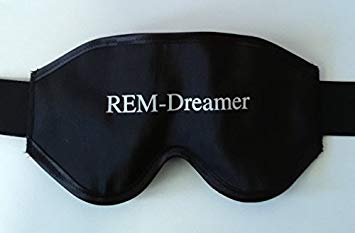
Beyond that, REM Dreamer is capable of delivering its dream signs in auditory as well as visual formats. It has lights and it can actually record and then deliver personalized audio cues.
Its most interesting feature is the one that lets users communicate with it, from within their dreams. This communication is based on the “scanning” hypothesis, which says that in-dream eye movements are reflected in the physical world through real eye movements.
This way – at least in theory – a lucid dreamer can signal to the device to stop delivering the dream signs, from within the dream. Such interaction is not just useful, it is potentially ground breaking.
REM Dreamer costs $170, which is reasonable, considering its features. Available for purchase, the device has already generated a substantial body of user feedback. Depending on where you check for such feedback, you may happen upon negative comments. These are quite natural.
Due to our lack of proper scientific knowledge on LD, everything we use to trigger it is hit or miss. For some people, devices such as the REM Dreamer apparently do not work. People who feel cheated are usually more motivated to post feedback too, so there are hardly any surprises in this regard.
The interesting bits of information are in the positive user reviews and community discussions however. There have apparently been reports of people who used the REM Dreamer for LD induction with nearly 100% efficiency. Scores of others have reported significant success with it. Even if we simply assume that some of these reports are faked, the community as a whole seems to have a very favorable opinion of this device.
That should definitely raise an eyebrow with every LD enthusiast. The cost of the device is not particularly prohibitive either, so it is more than worth a shot. It may just be your key to the world of lucid dreaming.
HypnoDyne’s ZMax – the Gold Standard of LD induction (5/5)
ZMax by Hypnodyne is a sleep headband as well, but it is in an entirely different price-niche than the devices discussed above. It costs $900. As such, it is by far the most expensive LD induction device you can currently purchase.
Why did it rate it 5/5 then? It is the only device which is accurate enough to be used for scientific dream research. In fact, many universities and institutions use it for just that, as you are reading this. In light of that fact, and considering its capabilities, I have to say that it is well worth the $900.
What exactly does the ZMax do though?
Launched in 2018, the device delivers auditory, visual as well as tactile dream signs. It is designed for overall dream research and within that taxonomy, it also deals with lucid dreaming. There is in fact a special lucid dreaming application available for download at the official ZMax website.
Neuro bio-feedback is also one of the applications of the device.
In addition to delivering stimuli through light, sound and vibrations, the ZMax also serves as a dream journal. Users can record their dream experiences on it fresh upon awakening, before the memory fades.
Sleep stage monitoring is obviously one of the strengths of the device. The procedures it uses to this end offer a true glimpse into how intricate an issue this truly is.
ZMax uses two frontal sensors for this purpose. These sensors track EEG activity and eye movements, among a number of other variables, such as heart rate, body movements, temperature, and ambient light. The EEG electrodes are not the usual dry ones. The device comes with its proprietary, gel EEG electrodes, which can be discarded after use.
The creators of ZMax are fully aware that dream stages are made up of person-specific patterns. Therefore, they made sure that the device creates an individual phenotype for each user, before it performs proper detection. To this end, there is a 2 hour span, during which at least one REM sleep stage is bound to come along. The device analyses this data and extracts its phenotype from it, which it can then use for detection.
All the algorithms used by the device, be it for sleep stage detection or LD stimulation, are proprietary. The platform itself is not an open source one.
Due to the complexity of the calculations and procedures it performs, ZMax needs to be hooked up to a computer via a wireless connection. The actual calculations involved in the analysis are performed by the computer.
While the ZMax platform is not open source, it allows for the creation of custom stimuli through the scripting of several functions.
Among the institutions that have used the device for research are the University of Leeds, Stockholm University, Harvard Medical School, Stanford Medicine, the University of Surrey etc.
As such, ZMax can legitimately be considered a benchmark in the realm of lucid dream-induction devices.
The ZMax website offers a bevy of resources for users. From sample data files and sleep reports, to sleep scoring, study planning and technical specifications, everything is covered.
In addition to devices which have more or less run their race, and those that can currently be purchased, there are a number under development. This review/rating piece would not be complete without a look at what the future may bring about in this regard.
iBand Looks Like a Promising Device (no rating available)
Although it has not yet hit the market, iBand looks like a device set to capitalize on experience racked up by some of the above reviewed contenders.
More precisely, it is looking to implement brain rhythm-, body movement-, temperature-, and heart rate detection. The litany of resulting information will be plugged into an “auto learning algorithm,” details on which are not yet available.
It is obvious even at first glance that the quality of the this algorithm will define the eventual quality of the device as well.
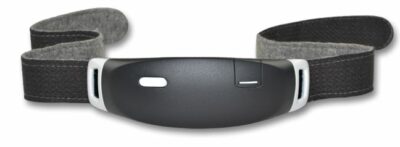
iBand got started in 2016, through a crowd-funding drive. The aim of this drive was to raise some EUR 50,000, but after 44 days, it had collected EUR 64,500, well surpassing its goals.
The system is still in development and as such, I cannot rate it at this time.
Neuroon Looks Like a Failure, Despite Successful Crowd Funding (no rating available)
Like iBand, Neuroon pulled off a very successful round of crowd funding, picking up more than it had initially intended. In fact, the project accrued almost 4 times its $100,000 goal. Despite that, the company behind the product has recently filed for bankruptcy, so we will likely not see an actual product.
Neuroon should have been a device focused on sleep stage detection. For this purpose, it would’ve used EEG detection, temperature and ocular movement tracking. A pulse Oximeter was apparently also part of the package.
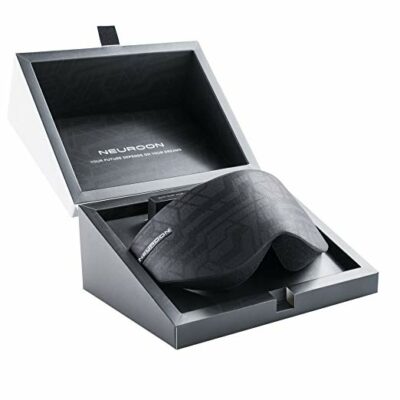
As far as LD induction goes, the device would have used tactile and visual triggers. Since this is apparently a stillborn project, there is no point in attempting to rate it in any way.
LucidCatcher and Aladdin Attempt to Walk an Unlikely Path (no rating available)
I have found two devices which are seemingly looking to explore new horizons in LD induction. The technology Aladdin and LucidCatcher are looking to exploit is that of transcranial alternating current stimulation (tACS).
The way it is supposed to work is the following: the device applies a low intensity stimulating alternating current to the forehead of the user, looking to increase frontal region gamma activity. It has been proven in the past that frontal gamma region activity increases while lucid dreaming. A separate study then seemed to conclude that increasing this type of activity through stimulation would lead to increased levels of self awareness in dreamers.
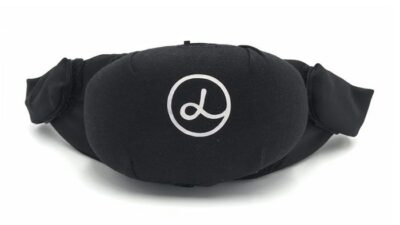
Recent findings have hung a major question mark above that conclusion however. According to these findings, to exert an effect on neuronal circuits, currents much stronger than the ones used in the above study were required. That led researchers to suspect that the results of increased self awareness reported may have stemmed from the physical stimulation the current exerted on the skin, rather than from neuronal stimulation.
In another turn of events, Aladdin reported to have duplicated the mentioned controversial study.
Long story short: the technology and the method of stimulation is unproven, and the approach may be a faulty one. Then again, it may turn out to work well on account of the physical stimulation alone. Time will tell, provided the project does indeed yield a functioning product.
Lucid Dream Mask Reviews – Conclusion
The field of lucid dream induction is a very interesting one, that obviously has people behind it willing to throw money at even dubious projects. Most crowd funding efforts have overshot their goals handily.
Despite the interest and the available funding, the taxonomy of LD inducing devices is not an impressive one currently. In fact, there is just one device that stands up to scientific scrutiny: the ZMax. That said, two other devices show promise based on user feedback.
ZMax’s price may be prohibitive for most LD enthusiasts. To them, Aurora and REM Dreamer offer viable, and cheaper alternatives. Even Remee may turn out to be an interesting toy for some, despite its simplicity.
It is safe to assume however that proper dream stage detection should be the starting point of any successful LD inducing device. As ZMax has showed, that process is far from being a simple (and cheap) one.
Whichever of the above reviewed and rated devices you decide to buy, keep in mind that there are a number of other things you can do to increase your odds for successful LD induction.
You can use various acetylcholinesterase inhibitors such as galantamine and other supplements that I have discussed on other pages of this site.
Read my Complete Lucid Dreaming Guide.



Dear Gregory Smith,
Thank you for your comment! Somni sleep mask looks interesting indeed.
Here is my Somni Mask Review.
There seems to be quite a buzz around the Somni Sleep Mask. Like the Nova Dreamer, it detects ocular movement to initiate red blinking lights AND it is set up for customized aural messages. Unlike the the Nova Dreamer, it is light weight. and little more than a sleep mask, with a device smaller than an MP3 player over one eye. It is only about $200. It made the leap from crowd funding to regular production. I am excited from the impressive thought behind its conception and from the reviews on YouTube and reddit. I’d certainly be interested in your evaluation as this is a great site. Dormiens Vigila!